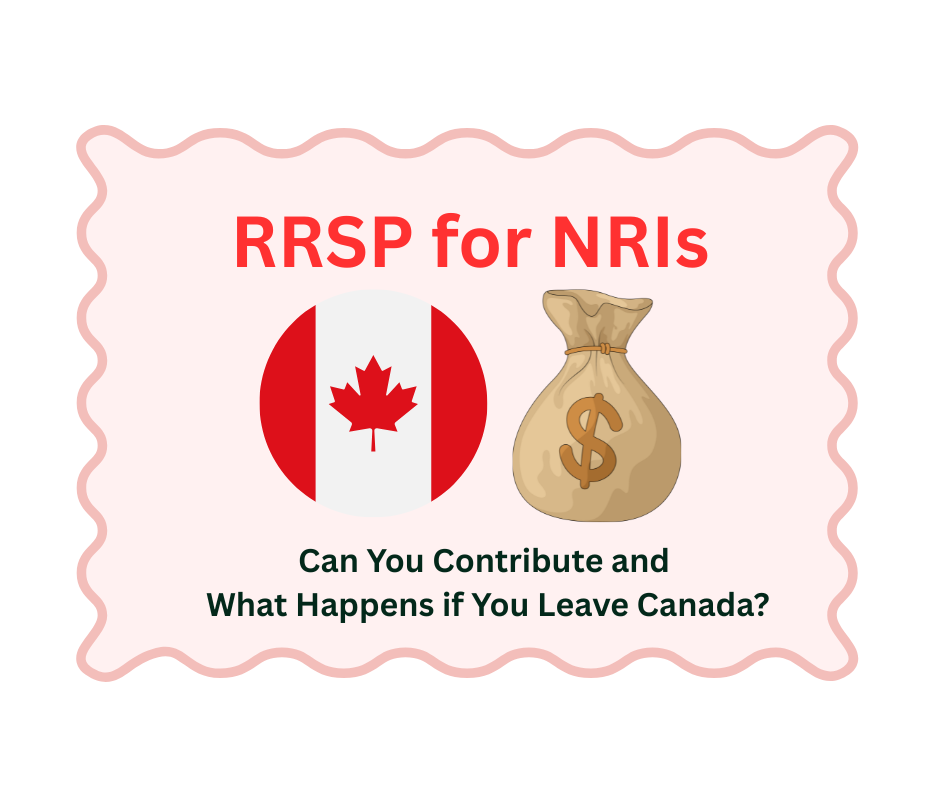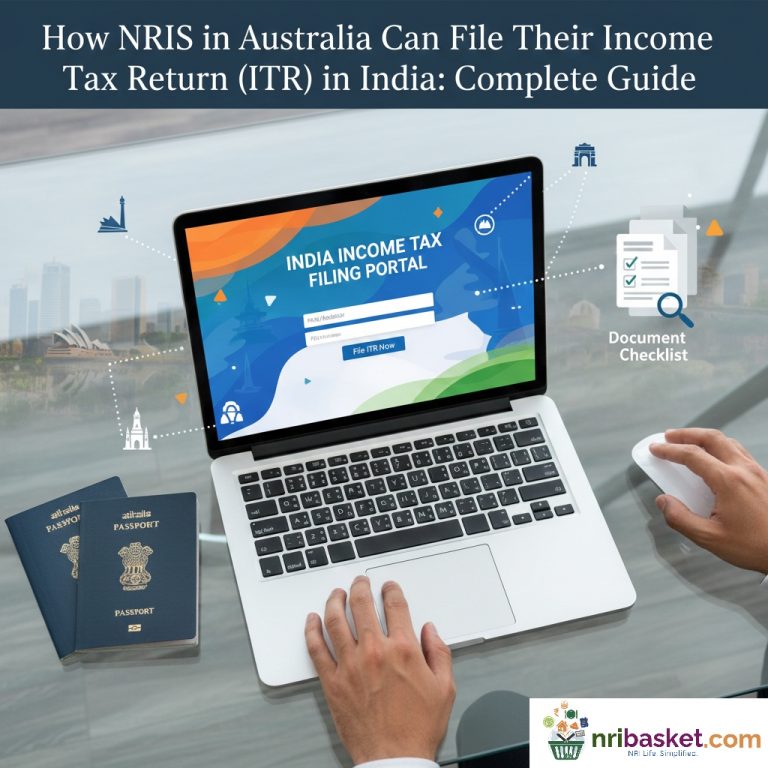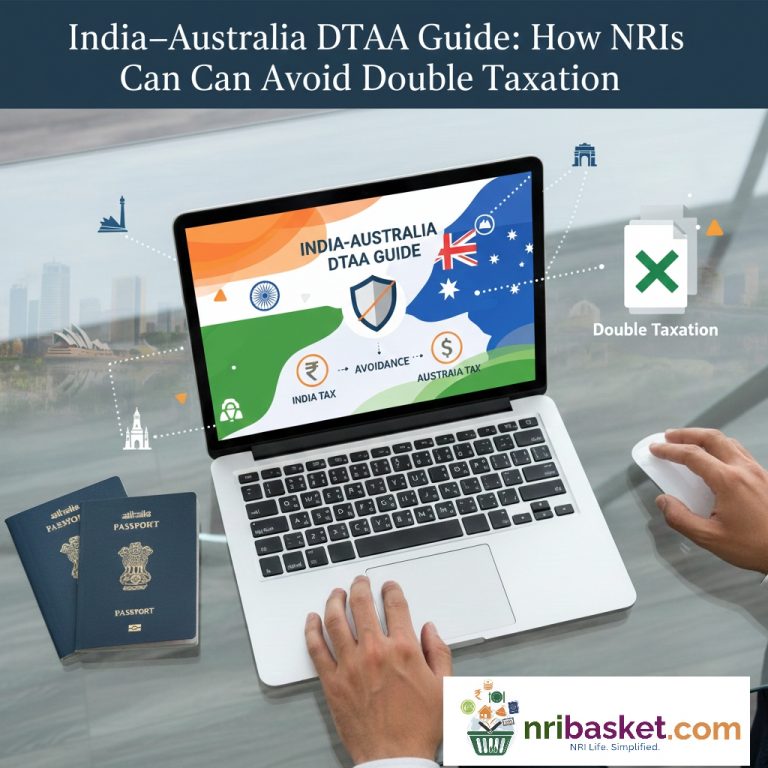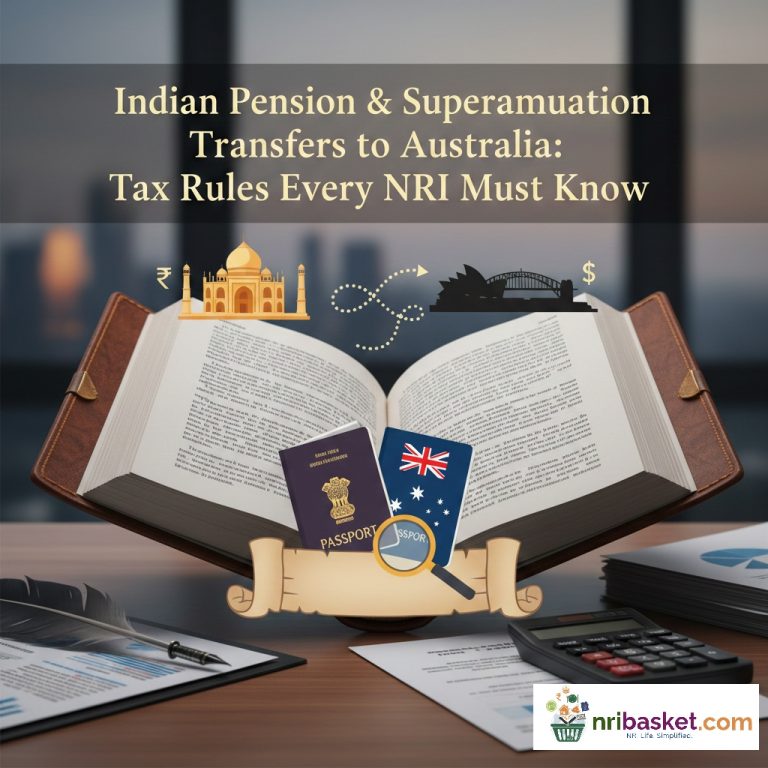
RRSP for NRIs
RRSP for NRIs: Can You Contribute and What Happens if You Leave Canada?
Many Non-Resident Indians (NRIs) who once lived and worked in Canada still hold an RRSP (Registered Retirement Savings Plan). But questions often arise when they move abroad .Can you still contribute? How are withdrawals taxed? And what happens to your RRSP when you leave Canada permanently? This guide answers all those questions in clear, simple terms. Learn about RRSP contribution rules for non-residents, tax implications, withdrawal procedures, and how the Canada–India tax treaty can help you avoid double taxation.
Learn everything about RRSP for Non-Resident Indians (NRIs) — contributions, withdrawals, and tax rules after leaving Canada. Understand how RRSP works for NRIs under the Canada–India tax treaty.
Long Answer: An RRSP is a tax-deferred savings plan that allows Canadian residents to contribute a portion of their income toward retirement. Contributions are tax-deductible, and investment growth inside the RRSP is not taxed until withdrawal. Non-residents cannot usually contribute unless they have eligible Canadian income and unused RRSP room.
Long Answer: Once you become a non-resident, you can still contribute to your existing RRSP if you have unused contribution room or Canadian-source income such as employment or business income. However, if you have no Canadian income, you cannot earn new contribution room.
Long Answer: When you leave Canada, your RRSP remains registered and continues to grow tax-free within Canada. However, withdrawals will be subject to non-resident withholding tax, usually at a flat rate of 25%.
Long Answer: You keep your accumulated RRSP contribution room even if you move abroad. But you can only create new contribution room if you earn Canadian income and file a Canadian tax return.
Long Answer: Withdrawals from your RRSP as a non-resident are subject to a 25% withholding tax by the Canada Revenue Agency (CRA). Some countries with tax treaties, like India, may reduce this rate to 15%.
Long Answer: You can withdraw your RRSP funds and transfer the balance to your Indian bank account after paying the applicable withholding tax in Canada. You must also report the income in India if you are a tax resident there.
Long Answer: Even if you’re a non-resident, you can convert your RRSP into a Registered Retirement Income Fund (RRIF) at age 71 or earlier. RRIF withdrawals will also be taxed at 25% unless reduced by a tax treaty.
Long Answer: Under Indian tax law, RRSP withdrawals are treated as foreign income and are taxable in India. However, you can claim a foreign tax credit for the tax already paid in Canada under the Double Taxation Avoidance Agreement (DTAA).
Long Answer: The standard withholding tax rate is 25%, but Canada’s tax treaties with countries like India may reduce it to 15%. Always confirm based on your residency and treaty status.
Long Answer: RRSP contribution room is based on Canadian earned income (employment, self-employment). Foreign income, like salary earned in India or the UK, doesn’t count toward RRSP contribution limits.
Long Answer: If you withdraw your entire RRSP as a lump sum after becoming non-resident, CRA will withhold 25% tax. The remainder can be transferred abroad, but you may owe more tax depending on your country of residence.
Long Answer: If you contribute to your RRSP while earning Canadian income, you may still claim a tax deduction. But if you’re fully non-resident and not filing a Canadian tax return, deductions don’t apply.
Long Answer: Your RRSP investments—mutual funds, ETFs, or stocks—can stay invested even after you become a non-resident. Growth continues tax-deferred until withdrawal.
Long Answer: The RRSP does not close automatically when you leave Canada. You can keep it until you decide to withdraw or convert it to a RRIF.
Long Answer: RRSP can continue growing tax-deferred as a non-resident, but TFSA contributions are not allowed after leaving Canada and may attract penalties if made while non-resident.
Long Answer: You’ll typically receive an NR4 form reporting the RRSP withdrawal and tax withheld. If you want to apply for a reduced withholding rate, you can submit Form NR5 to CRA before withdrawal.
Long Answer: Canada and India have a Double Taxation Avoidance Agreement. You can claim a tax credit in India for tax already paid in Canada, avoiding double taxation.
Long Answer: You can authorize your Canadian financial advisor or institution to manage your RRSP investments while you live abroad. Ensure your contact and tax-residency details are updated.
Long Answer: When leaving Canada permanently, inform CRA of your non-resident status using Form NR73. It helps determine your tax obligations and ensures proper treatment of RRSP and other assets.
Long Answer: Regardless of where you live, RRSPs must be converted to a RRIF or annuity by December 31 of the year you turn 71. Withdrawals will then be taxed at the non-resident rate.
Long Answer: You can withdraw funds from your RRSP before moving abroad, but it will be subject to regular withholding tax. Doing so while still resident may allow you to offset it with other deductions.
Long Answer: If you already have a spousal RRSP, contributions and withdrawals can still occur under the same plan rules, but the same non-resident tax treatment applies once you move abroad.
Long Answer: There is no penalty for maintaining your RRSP while living abroad. You just can’t earn new room or claim deductions without Canadian income.
Long Answer: The Home Buyers’ Plan (HBP) allows RRSP withdrawals to buy a first home, but it applies only to Canadian residents. Non-residents are not eligible for this program.
Long Answer: The Lifelong Learning Plan allows RRSP withdrawals for education only if you are a Canadian resident. NRIs cannot use this benefit.
Long Answer: Once you become a resident again, you can contribute to RRSP as usual, create new contribution room from Canadian income, and claim deductions in your tax return.
Long Answer: Major Canadian banks and financial institutions allow non-residents to maintain their RRSP accounts, though some may restrict trading options depending on your new country of residence.
Long Answer: Keeping your RRSP allows tax-deferred growth, while withdrawing gives liquidity but triggers tax. If your new country taxes RRSP heavily, consider partial withdrawal or RRIF conversion for better control.
Long Answer: You can open or contribute to an RRSP only if you continue to earn income in Canada and file a Canadian tax return. Otherwise, new contributions are not allowed.
Long Answer: To reduce tax impact, consider withdrawing gradually through a RRIF or using treaty benefits for reduced withholding. Consult a tax professional familiar with both Canadian and Indian tax laws for optimal planning.




